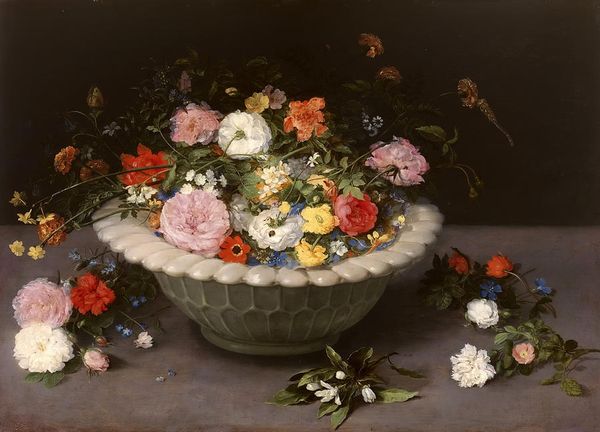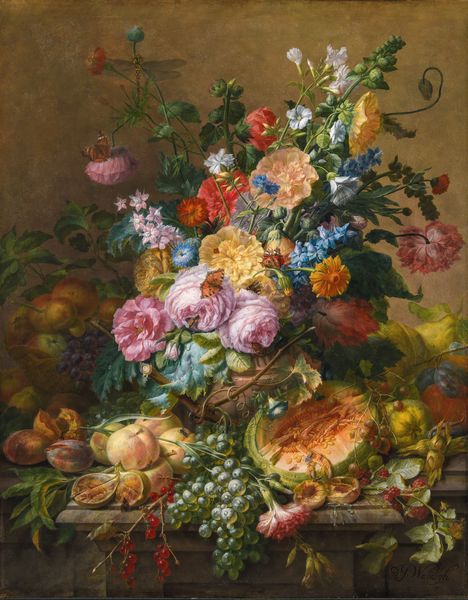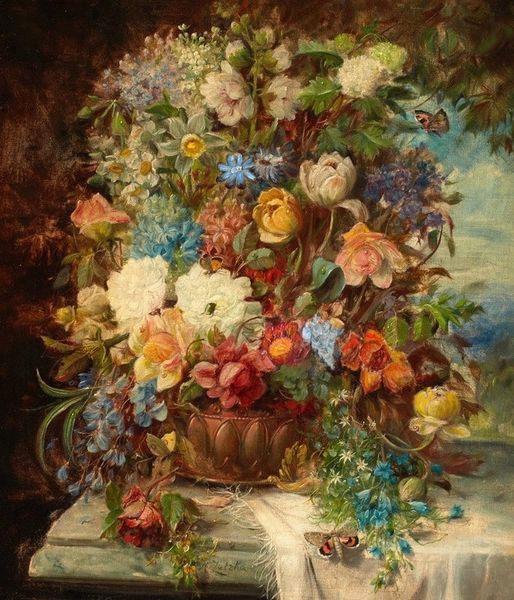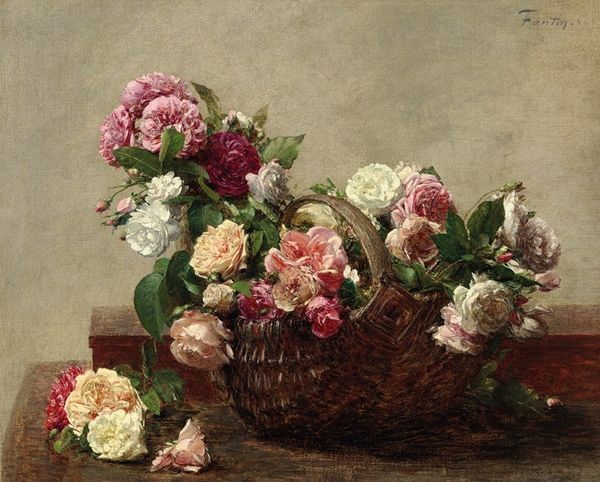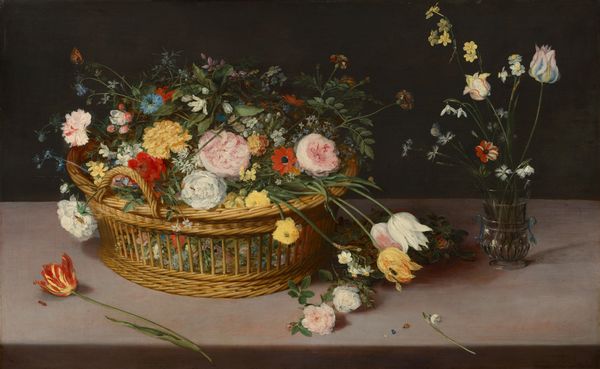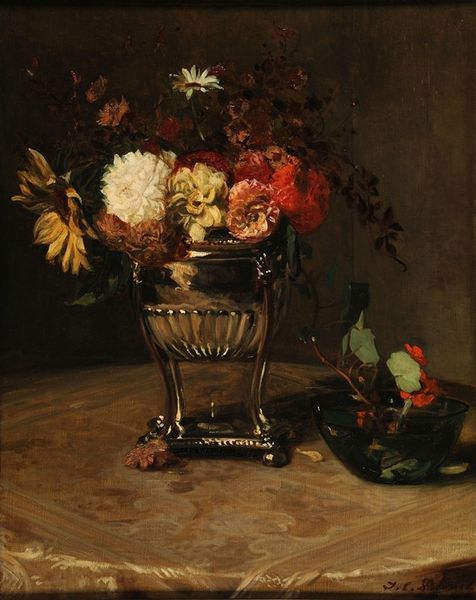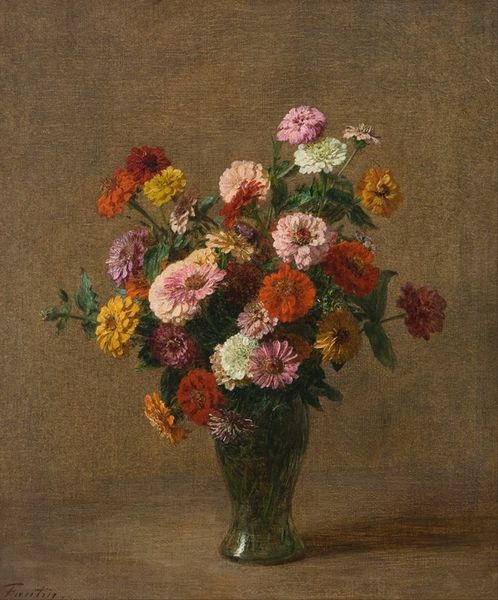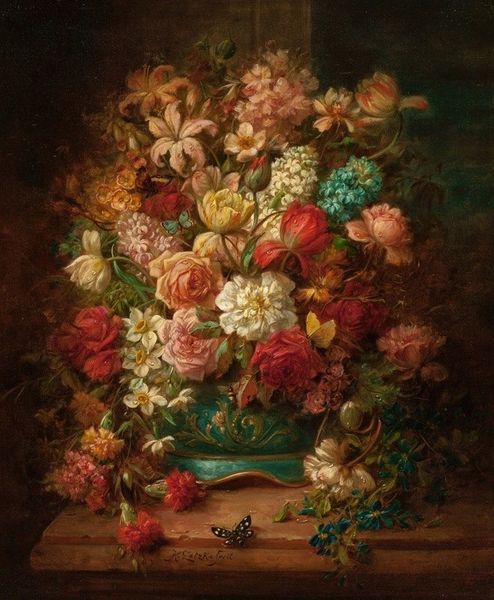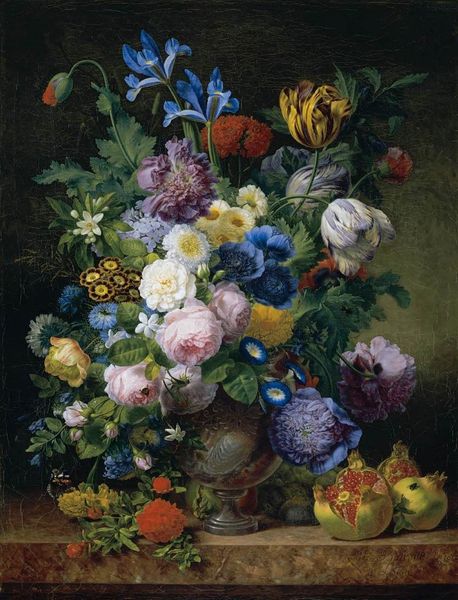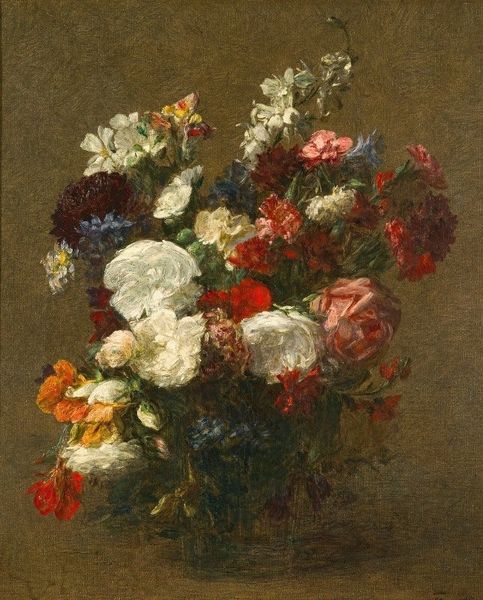
Copyright: Public Domain: Artvee
Editor: This vibrant collection of flowers and plums is "Still Life with Dahlias, Zinnias, Hollyhocks and Plums" by Eugène Delacroix, painted around 1835. It's quite a burst of color and life! I'm struck by how abundant and overflowing it feels, almost like a celebration of nature’s bounty. How do you interpret this work? Curator: Well, situating this painting in its time, we can see it both as a continuation of and a departure from academic still life traditions. While it adheres to the conventions of depicting luxurious, arranged compositions, Delacroix, who was central to the Romantic movement, departs from Neoclassical ideals of restraint and order. The loose brushwork and emphasis on color, seen especially in the array of hues of the flowers, signal a turn towards individual expression and sensory experience. Considering Delacroix’s interest in Orientalism, one might also explore how the oriental vase contributes to an overall composition which blends European and non-European influences. What aspects of this painting do you think speak to Delacroix's wider artistic and political project? Editor: That’s fascinating! I hadn’t considered the connection to Orientalism. The vase suddenly feels much more significant, almost like a silent statement about cultural exchange, even dominance. Is it common to see still lifes used in that way, to reflect social or political themes? Curator: Not explicitly or always, but the objects within still lifes are never neutral. They carry cultural meanings, reflecting tastes, economic conditions, and sometimes political ideologies of the period. The popularity of certain flowers, or even their arrangement, could signal certain societal values, attitudes towards trade, and other contemporary fascinations or concerns. Does understanding the painting in this light change your initial reaction to the abundance you mentioned earlier? Editor: It does! The abundance now feels a little less innocent, perhaps pointing to the era’s colonial ambitions and the wealth they generated. It makes you wonder whose labor or resources made this lavish display possible. Thank you. I'll never look at a still life the same way again! Curator: Exactly! Considering the painting in relation to its time can really unlock deeper layers of meaning.
Comments
No comments
Be the first to comment and join the conversation on the ultimate creative platform.
